- Experts
- Securing Ukraine
- Topics
-
Regions
FeaturedIntroduction Throughout its decades of independence, Myanmar has struggled with military rule, civil war, poor governance, and widespread poverty. A military coup in February 2021 dashed hopes for…
by Lindsay Maizland January 31, 2022
-
Explainers
FeaturedDuring the 2020 presidential campaign, Joe Biden promised that his administration would make a “historic effort” to reduce long-running racial inequities in health. Tobacco use—the leading cause of p…
by Olivia Angelino, Thomas J. Bollyky, Elle Ruggiero and Isabella Turilli February 1, 2023 Global Health Program
-
Research & Analysis
FeaturedCFR’s RealEcon team traveled across the country to ask Americans what they think of trade, aid, and other international economic policies.
Report by Matthew P. Goodman and Allison J. Smith March 25, 2025 RealEcon
-
Communities
FeaturedCarolyn Kissane, academic director and clinical professor at the Center for Global Affairs at New York University, leads the conversation on the geopolitics of oil. FASKIANOS: Thank you. Welcome to the final session of the Winter/Spring 2023 CFR Academic Webinar Series. I’m Irina Faskianos, vice president of the National Program and Outreach here at CFR. Today’s discussion is on the record. And the video and transcript will be available on our website, CFR.org/Academic, if you would like to share these materials with your colleagues or classmates. As always, CFR takes no institutional positions on matters of policy. We are delighted to have Carolyn Kissane with us to discuss the geopolitics of oil. Dr. Kissane is the academic director of both the graduate program in global affairs and the graduate program in global security conflict and cybercrime at NYU’s Center for Global Affairs, where she is also a clinical professor. She also serves as director of the energy, climate justice, and sustainability lab in the School of Professional Studies at NYU. She was named in 2013 by Breaking Energy as one of the top ten New York women in energy, and top ten energy communicator. She’s a member of the Council on Foreign Relations and the National Committee on U.S.-China Relations, and serves on several boards. So, Carolyn, thanks very much for doing this. We really appreciate it. I thought we could begin by talking about how has the geopolitics of oil changed, especially vis-à-vis Russia’s war in Ukraine and OPEC’s recent announcement to cut oil production? KISSANE: Well, first of all, I’d just like to say, thank you so very much for having me. I’m really delighted. I am a big fan of CFR’s Academic Webinars. So, to have the opportunity to participate in this—in this way is very meaningful to me. So, thank you. So, wow. There is so much happening in this space, the geopolitics of oil. This has been a tremendous fourteen months. Russia’s reinvasion of Ukraine very much upended the geopolitics of oil because Russia is a significant producer, one of the top three in the world. And it’s—you know, it’s caused a kind of a reshaping, a kind of a remapping of the—of oil geopolitics. And we’ve seen some, you know, shifts in how countries think about oil security, in light of larger questions about broader energy security questions. And also, on top of that, is the ongoing energy transition, coupled with, you know, climate change, and the need to decarbonize. So, there’s just—it’s been quite a—you know, a year and a half, that has really sort of put energy security, and oil security, very much at the forefront of people’s minds. FASKIANOS: Fantastic. I thought maybe you had some really interesting data to show us. And if you could walk us through those—the trends you are seeing and really bring it to life, that would be fantastic. KISSANE: Sure. So, before I do—I have a couple of slides. And before I share my slides, I think it’s really important that, sort of, we understand how interconnected, sort of, the global energy system is, and how interconnected we are, when it comes to the flows of oil. You know, some countries are very well resourced-endowed, so they have oil. And other countries do not, so they need to import oil. There’s really no country in the world that doesn’t need oil for larger national security issues. And I think one of things that many people sort of are not necessarily aware of or think about, is the amount of oil that gets produced every day. So, every day, the world consumes over 100 million barrels a day. And every day, that 100 million barrels has to be—has to be moved. It has to be—you know, as part of getting it into the system, getting it to its respective destinations. And what we’re not seeing—which, maybe some people may have thought that we would see at this point—is we’re not seeing a reduction in demand, but we’re seeing an expansion in demand. And much of that global demand is coming out of Asia. And we’re also, of course, seeing the—with the reopening of China, lots of really interesting questions as to what oil demand will be in China for the 2023-2024 years, whether or not they will—they will, sort of, put extra pressure on global demand. And you know, Irina, just also, you know, it’s—I’m going to share this in my slides. But you know, last week’s decision from OPEC+ to reduce production, of course, had an impact on the price of oil. So when the decision was announced on Sunday, by Monday morning, we saw an uptick in the price. It’s stabilized, but we are sort of looking at $80-plus-a-barrel oil. And again, lots of uncertainty as to what that’s going to mean across economies that are in recessions, experiencing sort of the beginnings of a recession, and sort of what does it mean for the global economy, where we may see sort of more energy inflation. So, one of the things that I really like to do when I teach the geopolitics of oil is sort of show some visuals. Because I think, again, sort of, really reinforcing the interconnected nature of our global energy system, but also sort of seeing where in the world is oil produced, and where in the world are the—are the importers. And also, just a couple of sort of fun pieces on what we have seen, just this—you know, in the last week, of course, some of this—you’ll be familiar with, those in the audience—but this decision on the part of OPEC to reduce production by 1.2 million barrels a day—again, happening at a time, not when we have an excess supply, but when we’re seeing a tight supply across the oil market. So, it came as a bit of a surprise to—you know—to even the most, you know, longstanding analysts and OPEC observers. And again, part of this is directed probably toward self-interests on the part of Saudi Arabia and the oil producers that are really going to make the cuts. But of course, it also has an impact here for those of you that are sitting in the United States. What does it mean then for prices that Americans pay at the gas pump? So, the Biden administration sort of came out after this decision was made in sort of being disappointed, surprised that OPEC would make this decision. Now, it’s also important to sort of recognize that this is not just a singular OPEC decision. This is part of, now, a larger OPEC+. And OPEC+ does also include Russia, as well as other countries like Kazakhstan and Mexico. So, the OPEC that we have historically known is now different, because you have other countries that are not official members but nonetheless are part of what we now refer to as OPEC+. And these are the countries that are part of OPEC, and really the country that’s considered to be sort of in the driver’s seat of OPEC is that of Saudi Arabia, because Saudi Arabia is the largest producer within the OPEC organization, producing anywhere from 10 to 11 million barrels a day. Venezuela has the largest reserves, but it is far from being at capacity, in terms of what it can—what it can produce. So, just to kind of put that into perspective, these are OPEC countries and their respective reserves. And then non-OPEC—the United States being a non-OPEC country, but again, this sort of—this chart to the right shows, you know, again, the world is consuming a little over 100 million barrels a day, expected to increase over 2023 and into 2024, question marks as to when we may see peak oil demand. But again, to sort of link this to energy security—energy security, especially when it’s in the context of oil security—is making sure that we have adequate supply at affordable prices. So, when we see a reduction in supply at a time of tight markets, that suggests that we’re also going to see higher prices that’s going to directly hit vulnerable economies. And so, again, just to sort of point out sort of where in the world sort of are the top three oil producers: the United States, Saudi Arabia, and Russia. Russia remains in the top three. Canada as well, our, you know, neighbor to the north. And China is also a producer of oil. The United States figure here also includes gas liquefied, so liquid petroleum, which the United States is endowed with a lot of both oil and natural gas. And then the top oil consuming countries, you have U.S., China, and India. Now, the United States is not the largest importer. That position is now held by China. But as far as consumption goes, we consume over 20 million barrels a day. Again, big question mark about China, in terms of whether or not we will see higher demand coming out of China over the next year, two years, with China’s reopening and what is being, you know, discussed as revenge tourism. And more Chinese who have accumulated a lot of savings, 2.1 trillion, how are they going to use that savings and whether or not, after three years of being under lockdown restrictions, whether or not we’ll see impacts to demand. And I think Russia is—there’s lots of questions about Russia. And this is now—we’re fourteen months into, you know, Russia’s reinvasion of Ukraine—and I emphasize reinvasion, because oftentimes, we forget that, you know, Russia invaded Ukraine in 2014. But Russia is still moving its oil. And up until, you know, a few months ago, its overall production and exports were as high—at some points, even higher—than pre-invasion. Now, you have new countries that are takers of Russian oil, and they’re buying it at discounted prices. We see Turkey, Singapore, China has been a big buyer, as well as India, that they have been buying discounted Russian oil. Lots of interesting questions that we could discuss about the oil price cap and seaborne embargo to Europe. But I think the takeaway from this slide is that Russia continues to produce oil, continues to sell it, selling at a discounted price, but there are still many countries in the world that are eager to take Russian oil. And again, I’m not going to go into this, but I just love this slide, to just emphasize the—you know, the world’s pipelines. These are the pipelines that help sort of the transit of oil. Something also that’s really unique and interesting to look at is just tanker traffic, so, the tankers that carry oil around the world. But again, you know, there are a lot of pipelines, so twenty-three—two thousand, three hundred, and eighty-one operational oil and gas pipelines. Again, these are—it’s moving a lot of the oil that is consumed every day. And then finally, is this—is—you know, one of the things that we oftentimes—we think about the hundred million barrels a day that the world is consuming, over 75 percent of the world’s oil is controlled, managed by state-owned oil companies. So, Saudi Aramco being one, PDVSA of Venezuela being another. But it’s really important to sort of recognize the position that state-owned companies have. The rest is controlled or managed by international oil companies—ExxonMobil, Chevron, ENI, Total, and a host of other—host of other companies. But again, I think the—you know, to understand that NOCs, as they’re referred to, are very, very important for understanding their role in the larger context of the geopolitics of oil. And again, what we saw last week coming out of OPEC, this decision, this is also being driven by state budget concerns. This is—again, it’s about the production of oil, but it’s also about, you know, governments and their budgets. And oftentimes, you know, there is a desire to add more, rather than—you know, more revenues rather than less. So, those are the slides that I have. And I hope that they sort of provide some sort of context, and a little bit of, you know, that we can discuss in the questions that I really look forward to answering from the audience. FASKIANOS: Thank you, Carolyn. That was great. So now, we’re going to go to all of you for your questions and comments. (Gives queuing instructions.) All right, so I’m going to go to the first raised hand in the thing. Amadine Hom, go to you first, and please accept the—unmute yourself. (Pause.) You are still muted. (Pause.) OK, I don’t know—are you there? Oh, I think—OK. Let’s go to Morton Holbrook. Q: Yes, good afternoon. Dr. Kissane, what a shocking presentation—(laughs)—a hundred million barrels a day and it’s going up, notwithstanding the Paris Climate Agreement of 2015. Is that agreement simply a dead letter, or is it having any effect on oil—on fossil fuel production, particularly oil production? Or what’s the best scenario, in terms of reducing dependence on fossil fuels, considering the oil market? Thank you. KISSANE: Well—hi, Morton, thank you so much for that excellent question. Yeah, that’s kind of why I emphasize that number, is because a lot of people sort of just aren’t aware of how much oil we continue to consume, and again, what the demand expectations are moving forward. And these demand expectations are, you know, coming out of forecasts from the International Energy Agency. So, I think there’s a big question as to when we see peak demand. And, you know, if you look at BP scenarios, they expect peak demand to happen, you know, before 2030, where, as, you know, others kind of contest that they—that they think that peak demand won’t happen until after 2030. I mean, again, a lot depends on, you know, what we are now experiencing in the energy transition, and how, sort of quickly are we—can we transition away from oil. I think what’s really critical, when we’re looking at oil, is oftentimes we think only about the transportation sector. So we’re thinking about cars, we’re thinking about planes, you know, we’re thinking about trucks, and tankers, and all these things. But it’s petrochemicals, you know? There’s just a lot of oil that also goes into fertilizer. So, it really is across our economy, and across economies, across the global system. One of the things that I always tell my students is even during COVID, where you had many countries, right, much of the world was experiencing some level of lockdown, we did have a reduction in oil demand, but it wasn’t—it wasn’t like 20 million barrels. It was under ten. So, the fact that now it’s 2023, the world has reopened, it’s really hard to sort of see, or to know with certainty, is when we’re going to see that—see that reduction in demand. Now, I think with the Paris Agreement, what’s also important is—to note is, you know, if you’re—if you’re in the oil and gas space—and I was just at a conference earlier this morning where this was a point of conversation—was, you know, what are the companies doing to reduce the emissions from production? So, how are they integrating carbon capture, sequestration, you know, how are they managing the emissions that come from the production of fossil energy—in this case that we’re talking about, oil. And I think one of the things that—I think if you sort of follow oil markets, or a country like Saudi Arabia, they are marketing low-emission oil. Now, we could—you know, we could sort of challenge, well, what does that—you know, what does that really mean? But you are having, you know, countries that are now sort of competing to state that they have lower emitting carbon in the production—in the production of oil. And that’s a whole other interesting sort of thing to look at, in the context of the geopolitics of oil, is to kind of understand the variation across emissions, across different countries, in the production of oil. So, we are—you know, again, we are going to be going into COP-28 this fall. Again, we are not seeing—you know, and we haven’t seen a, you know, reduction in fossil energy demand. Again, lots of people are sort of, you know, hoping that we’ll start to see it sooner rather than later. But for the time being—and again, you know, to Irina’s first question, that, you know, the last fourteen months, and with, you know, with Russia’s invasion of Ukraine, it has both shown us that, you know, Europe is sort of seeking to hasten the energy transition, by building out more renewable energy, and creating more opportunities to buy electric vehicles. But there’s still big swaths of the world that, you know, are still, and have yet to move towards, you know, really reducing—and that are actually going to see higher demand moving forward, as their economies grow. FASKIANOS: Thank you. I’m going to take the next question from Jovana Vujanic, who is a graduate student at Lewis University: How big of an—of an impact will the decision of the Saudi energy minister to cut oil production have on the relationship between the United States and Saudi Arabia? KISSANE: Love the question, thank you so much. Yeah, no, it’s a great one. So, my take is that, of course, this decision came as a bit of a surprise, and it wasn’t something that the United States, you know, wanted. But I would say that the U.S.-Saudi relationship has been very tense for the last ten years. And as part of that—there are lots of different reasons for that, but this is yet—kind of another thing that Saudi has done. And again, I think it’s also—Saudi has taken a non-alignment policy with relation to its position on Russia and Ukraine. So, it continues to—you know, it continues to have a relationship with Russia. It also has the relationship with Ukraine. As we saw, you know, China just brokered a very significant deal between Saudi Arabia and Iran. You know, again, Saudi Arabia and Iran are two—are two important producers for China. So, China is a large importer of oil. So, if you go back to World War—the end of World War II, that’s when the United States established the oil-for-security relationship with Saudi Arabia. And as we have grown, sort of, more—I wouldn’t say independent, but our—as our own oil production has increased, especially through the shale revolution, our dependence on the Middle East and Saudi Arabia, more specifically, has shifted. So, I think we’re seeing a very different Saudi Arabia today, which I think is going to be a challenge for the United States. I think it’s going to be very interesting to see what the summer holds. Last summer, the Biden administration did tap into the U.S. strategic petroleum reserves, the largest—the largest take in the history of the reserves, which started in 1975, you know, taking 180 million barrels out, you know, not because there was massive supply disruptions. But because, you know, as the administration said, it was—you know, it was—it was—it was a war—it was a war-specific decision, because the—you know, Russia’s invasion of Ukraine was causing energy prices to skyrocket. And to cushion the American consumer, and to better cushion the, sort of, the global economy, the United States withdrew from the SPR. So I think the summer is going to be very interesting. But I think we’re going to see, definitely, much more attention in the years to come, between the United States and Saudi Arabia. It’s not the relationship of the past. This is a kind of a very new relationship. That’s a great question. FASKIANOS: Thank you. Thank you, let’s go Curran Flynn, who has a raised hand. Q: Hello? FASKIANOS: We can hear you, but we’re getting feedback. So you might have two devices open. Q: Can you hear me now? FASKIANOS: Yes. Q: That’s better. OK. FASKIANOS: That’s better. Thank you. Thank you so much. Q: So, I’m here at King Fahd University in Saudi Arabia, right next to Aramco, here with my class from international relations. And one of my students has a question, Nasser al-Nasir (ph). Here he is. Q: So, thank you, Mrs. Carolyn. My question is: How could Russia’s use of alternative transportation methods, such as the East Siberian Pipeline to China, impact the U.S. market, the domestic market, and the role of the SPR, given potential insurance workarounds from Russia’s side such as ensuring Russian tankers through their RDIF fund? And thank you to Mrs. Irina. KISSANE: Thank you. And, Dr. Flynn, thank you so much for having your students join this webinar. So, I’m a little—so, the question is about the East Siberian Pipeline? Just could you—would you mind repeating it? I just want to make sure I have it—I’m clear on the question. Q: So, how could Russia’s use of alternative transportation methods, such as the East Siberian Pipeline to China, impact the U.S. energy markets, I mean domestically, and the SPR, given potential insurance workarounds from Russia’s side such as ensuring Russian tankers to the RDIF fund? KISSANE: Yeah, and that’s a great question. You know, I think that, you know, begs a lot of things that we could be looking at, right, in terms of, you know, Russia’s kind of ability or capacity to sort of work around, or find workarounds, to the sanctions that were imposed. And I think we’ve seen sort of new markets—so, this kind of reshaping of the energy map with oil, we see that as—kind of in technicolor, right, whereas, you know, a lot of Russian oil would go west, is now going east, you know, China, India, being takers, and of course, you know, other countries as well. You know, what will be its impact on the—on the U.S. market? I think that’s—you know, again, I do think the sanctions were sort of carefully put into place, so that there wouldn’t be massive disruptions, so we—again, you know, Russia produces over 10 million barrels a day, and about 7 million of those barrels are exported. So, you know, if we lost all of that, that would be a—you know, that would cause some very significant economic disruption globally. We already saw, you know, impacts to sort of grains, grain exports, and food security in many different parts of the world. So, you know, Russia is finding different ways. You have shadow tankers that Russia is using to move—to move its oil—as you pointed out, the East Siberian pipeline. You know, I think there’s only so much the United States can do, or—and European countries that are part of the sanctions regime, can do to curtail Russian exports of oil. But I think that—you know, I think Russia, again, has a—has a desire, and also, you know, revenue needs—they’re funding a very expensive war—that they’re finding ways to get their—to get their oil out. I think an interesting question is, you know, what does this mean in the years ahead, the lack of investment, for example, that’s going into Russian energy infrastructure, a lack of, sort of, any kind of Western investment that is—that is going in, and what that is going to mean. But again, you know, I think, to your question, I think we will see some—you know, we are seeing some impacts, right? There’s a big question as to what—you know, what the next six months to a year will look like, with regards to the reduction from OPEC, and if we were to see a deeper curtailment on Russian oil. And you know, would the United States then tap more into the SPR? We’re now at—you know, we’re down to seven hundred thousand barrels, which, of course, is not insignificant. But we also sort of have to be, you know, judicious about how we use the SPR. But thank you for the question. FASKIANOS: Thank you. I’m going to take the next question from Michael—let’s see— Trevett, a Ph.D. candidate at the University of Southern Mississippi: China and other countries claim there are petroleum reserves under the South China Sea. What are your estimates of the potential amount there, and has China begun to extract any of this oil? KISSANE: Michael, thank you so much. That’s a great question. So, China already is an oil producing country, so you do have oil production in China. In the South China Sea, I can’t—I can’t say exactly. I know that there have been geological tests that have shown the reserves. Again, you do have—you know, you do have territorial concerns about sort of where—is this—you know, can China—can China tap those—or seek to explore and tap those reserves, again, if there are—if there is contention over the territory in which these reserves are located? So you know, China, again—one of the things that’s very interesting about China is that China is an oil producer, but China has seen, over the last, you know, the last decade, they have seen that they have experienced peak demand. So—I mean, sorry. Peak supply. So, they are not producing as much as they used to. And so you’re seeing a year-on-year reduction in the producing capacity. You know, if you go back maybe five or six years ago, there was lots of questions about if China could kind of replicate what happened in the United States around the shale oil revolution. I think one of the big challenges for China is that, of the—you know, where the shale reserves are located, it’s not near water, lots of questions as to—and some of it—basically, some of the tests have shown that it’s—it definitely is proving harder that, you know, they cannot sort of model the same level of development that we have seen in the United States. So, yeah, no, I think in the South China Sea, again, I think we—it’s potentially possible that we might see it. I wouldn’t—I wouldn’t—I wouldn’t say it’s soon. FASKIANOS: Thank you. I’m taking the next question from Rob Warren at the Anglo-American University of Prague. This question also got an upvote: How do you foresee Venezuela’s role in the global oil market changing moving forward? And can it be reintegrated into the global economy? KISSANE: Oh, these are all fantastic questions. Thank you all so much. Yeah, Venezuela is—again, you know, Venezuela has—they have the largest reserves in the world. As part of this webinar, right, you—CFR had a—kind of a primer on Venezuelan, and kind of—you know, you look at sort of where Venezuela is. And one of the biggest challenges confronting Venezuela is both its politics, but it’s also—it basically—you know, you don’t have—you don’t have international oil service providers in the country. I think the only—the only one now that the U.S.—the U.S. has sort of given a sanctions exemption to, is that of Chevron. But I think—yeah, I mean, if you were to see, you know, kind of shifts in the political regime, and you were to see more openness, then I think you could imagine, you know, Venezuela having an opportunity, or a pathway forward, to be more integrated into the global energy system, and the global oil system. You know, I think one of the big problems that Venezuela faces is that most of its infrastructure is really old at this point. And it would need a significant amount of reinvestment to get it up to a place that it could sort of meet its potential. So, you know, Venezuela is one of these countries that’s not producing as much as it could, right? It has the potential to be producing 2 million-plus more barrels per day. But you know, we’ve seen that they really have just—they went into freefall. So, I think that’s a big issue. And another big issue, which—God, it goes back to an earlier question—is that of emissions. So, the oil that comes out of Venezuela is a very, very heavy oil. So, it’s—it has very large carbon emissions associated with the production of that oil. So, that, I think, is—again, as we—you know, think about the emissions from oil production in countries that are sort of seeking to kind of market themselves as low-emission producers, you know, Venezuela definitely will have a very hard time recouping its—where its oil sector was. Again, it has the capacity, it has the reserves. But getting that—getting that oil out of the ground right now, you have a lot of significant above-ground risks. FASKIANOS: Thank you. I’m going to go next to Clemente Abrokwaa. Raised hand, so please unmute yourself. Q: Can you hear me, please? FASKIANOS: Yes, we can. Q: Thank you. Thank you so much for your—for your talk. I was also very shocked about the amount of barrels that we consume every day. (Laughs.) I didn’t know that. But anyway, I’m from Penn State University. And my question is: You just mentioned about the above-ground, you know, effects. And—so the movement towards, like, electric vehicles and so on, how do you think it is going to affect the African continent? KISSANE: Thank you. Q: I am—I’m thinking, you know, the economies, and then infrastructure. It will be very difficult for them to—(laughs)—move with the rest of the world in terms of electric vehicles, and so on. I just wanted your take on that. KISSANE: Thank you, Clemente. It’s an excellent question. Yeah, I mean, you have countries across the African continent that not only have oil reserves, but are already producing, right? Nigeria is a—is an oil-producing country, also has more capacity, but again, you have some above-ground risks. You also have the need for investment of new infrastructure. I think one of the things that has been very interesting—and I think it’s getting—it’s getting more attention, as it deserves, is how Western governments are—some of—I think a challenge across Africa is that a lot of Western governments have sort of said, listen, we’re not going to invest in fossil fuels—or also, financial institutions, Western financial institutions—we’re not going to invest in fossil fuels, or new projects that are fossil-based. And that—you know, that’s problematic when you look across the African continent, where you still don’t have, you know, 100 percent energy access. You know, the idea of the transition to electric vehicles, which is taking a very, very long time, even here across the—across developed economies—so the need for the infusion of more capital to go into, you know, across the continent of Africa for oil and gas, that’s for their economies and for their own economic growth, I think, is really, really pivotal. And I think this is something that, you know, is being discussed across multilateral financial institutions. And also, you know, is it hypocrisy, right, for Western banks that have, you know, kind of funded the oil and gas industry, or helped to fund the oil and gas industry in the United States and many different parts of the world, and that are now sort of not allowing those funds to flow to Africa. And they have the—again, they have the—they have the resources. So you know, is it—you know, the equity of some of these decisions that are being made, I think, is one that’s—is one that’s really important. And again, I—you know, I said earlier in this talk, is that, you know, all—most of the demand for oil is not coming from North America and from Europe. All of the demand that we’re seeing and new demand that we’re going to see, is coming from Asia, and is going to come from Africa. So again, you know, how are we going to make sure that that demand is met, again, going back to that idea of energy security, so there is—there is accessibility, so there is reliable sources of energy at affordable prices, you know, without sort of thinking about kind of a whole-of-energy approach. So, I think it’s very—it’s a very complex issue. And I think, you know, Western banks who have sort of taken very sharp positions on what they will and will not fund, when it comes to new oil and gas projects, are getting sort of challenged as to, you know, what does that mean, then, for, you know, countries across Africa that are still very much in need of more energy, not less. And again, recognizing that, you know, EVs that, again, are still—are—you know, we’re seeing adoption here in the United States and across Europe, but it’s a big, big, big adoption in China. But it’s very uneven. So how do we ensure greater energy security for the continent of Africa, I think, is a really critical question. FASKIANOS: Thank you. I’ll take the next question from Kyle Bales, who is a senior at Lewis University in Romeoville, Illinois: How is the war between Russia and Ukraine having an effect on the progress of the European Green Deal? Maybe you can tell us what the European—define the European Green Deal for us, Carolyn, give us the context for that. KISSANE: Yes, so, again, this is another fantastic question. Yeah, the European Green Deal, it’s—this is—this is great. Yeah, I mean, a lot of people would say that the European Green Deal now is—that the—Russia’s invasion of Ukraine has sort of said, hey, this is why the Green Deal is so important. This is why we really need to more quickly transition to renewable energy, because look what—look what happened when we were dependent on Russia for over 30 percent of our natural gas. And look, when Russia, you know, illegally invades Ukraine and suddenly weaponizes gas, we are left very energy-insecure. It affects—it affects consumers. It affects industry across the continent. So, I think we’re seeing, not just through the Green Deal, but we’re also seeing through, sort of European green industrial policy—so in some ways, akin to what, you know, we put into effect in—this past summer, is the Inflation Reduction Act. And we’re seeing almost, kind of, this industrial competition around clean energy technologies. And so, Europe is investing—you know, I think it’s about $250 billion, the United States, it’s about 370 billion—towards the—kind of the energy transition, and helping to support domestic industries and companies to—you know, to be able to, you know, develop the technologies, and to have the, you know, the opportunity to contribute to the energy transition. So, I think one thing, though—whenever I talk about Europe, it’s really important, is to sort of recognize that, you know, when you look across Europe, you have very different policies and kind of approaches, to sort of thinking about energy, and how quickly some countries want to transition and can transition, whereas others, you know, are probably going to experience a slower transition. So, just really interesting example, as you talked about the Green Deal, is the EU taxonomy, the green taxonomy, that went into effect in the—January of 2022. And there, you had, like, really a lot of contention between France and Germany, because France wanted to make sure that nuclear was part of the green taxonomy. Germany was opposed, right, but Germany wanted to make sure natural gas was part of the green taxonomy. So ultimately, in the end, both natural gas and nuclear—and again, this was—this predated Russia’s invasion of Ukraine. But in the EU green taxonomy, you have—you know, you have both nuclear and natural gas, in addition to other renewable energies that can make up this taxonomy, that includes specific measures towards adaptation and mitigation for climate change. So you know, I think you’re seeing this kind of—some people call it a race, a competition. You know, ideally, it’s—you know, we’re kind of working together to—because we’re all sort of going in the same direction—to, you know, support the transition, and to reduce—to reduce carbon emissions, and to bring in more, sort of, cleaner energy technologies into our system. FASKIANOS: Thank you. I’m going to take the next question from Dr. Laeed Zaghlami. Q: Yes, good afternoon. This is Laeed—good afternoon, Irina. Good afternoon, Carolyn. I’m very pleased to be part of your program. Just to—want to be back to Africa and particularly to Nigeria, how practical the two projects that Nigeria is advocating for pipelines, one from—through Algeria, and the other one to Morocco through western African countries? How practical are these pipelines to supply gas to Europe and parts of some African countries? FASKIANOS: And Dr. Zaghlami, you are at Algiers University, correct? Q: Indeed, Irina, yes. I am professor at University of Algiers, faculty of information and communication. FASKIANOS: Thank you. KISSANE: Dr. Laeed, can I—can I keep you on for just one second? Can I ask you, what is the—what is the status right now? Is it—it’s planned, under construction? Where is—what is the status of those two pipelines? My understanding is that it’s—they’re proposed, but— Q: Yes, well, actually in—practically, the pipeline between Algeria and Abuja, which means through Niger and so forth, is already in progress, whereas the other project, through thirteen western African countries, they are supposed to be implemented by 2047. But is it—is there any political game or something of strategic—(inaudible)—how practical, how logical, how efficiently will be for Nigeria to have two similar project(s)? KISSANE: Yeah, no, it’s—again, thank you for the question. You know, pipelines, again, that’s why I wanted to show the—(laughs)—kind of the map of pipelines, is because, you know, a lot of pipelines transverse, you know, multiple countries, right? And this is—this requires not just, you know, a lot of cooperation, but it requires technically. It also can be very complex to build—to build pipelines. And when you’re talking about something like, as you—as you point out, these are, you know, crossing many countries. You know, I think one of the—again, one of the issues is whether or not—since, you know, what already is under construction, I think you can, you know, with confidence, that one will be completed. Anything that’s not yet under construction—and again, the timeline, 2047, is way out there—a lot of—a lot of uncertainty as to what the status of those projects will be moving forward, for various reasons, in terms of making sure that the investments are there. Someone I know that studies pipelines, he says, you know, until the steel is in the ground, you don’t have the pipeline, and so until you know that you’ve got that, you know, you’ve got all the OKs, and you feel that kind of security of being able to build it, and being able to provide the resources to supply it and to move it. I think Algeria has been a really interesting case that hasn’t gotten enough attention, in terms of Algerian gas, that has—that has helped support Europe. Over the last years, we’ve seen an increase in Algerian gas going into Europe. Again, a lot of attention on U.S. LNG and the increase of liquefied natural gas exports into Europe, but also Algeria has been, you know, very important for helping to support European energy security, and make up for some of the losses of the—of the Russian gas. And I think we’ll see more attention on Algeria, and Algeria’s role as a—you know, as an important source of energy, especially, you know, gas, going into—going into Europe, moving forward. FASKIANOS: So, I’ll take the next written question from Vincent Brooks, who is at Harvard and Diamondback Energy board of directors: How do you view the purchasing of discounted Russian oil by India, in particular relative to the purchasing by China? How are they using the oil purchased? And are you seeing more internal usage or external profit-making sales in places like Africa? And what are the implications of all of this? KISSANE: Right, great. Great question. So, all of the above—(laughs)—in some ways, right? There is definitely sort of profits that are being made. You know, I was—I was talking about this last week with someone, and you know, if you sort of put your shoe—put yourself in the shoes of India, right, so, India is a—is a rapidly growing economy, 1.4 billion. You know, if you had—if you have very high energy inflation and high oil prices, that’s going to have ripples effects across the Indian economy. And so, you know, when you have a kind of opportunity to buy, you know, pretty steep discounted oil, which, you know, they had been able to buy from Russia, you know, for purposes of national security, they’ve been buying the oil. And one of the things that’s very interesting about India is that, actually, India has been building out its refining capacity. So, a lot of that oil is both for domestic, and some of it is being sort of re-exported. But I think what we’ve seen is that they’re using that oil to also sort of enhance their capacity and capabilities as a rapidly emerging, refining power in Asia. And we see that in some ways in China, too. So, China, even though oil demand was down in 2022, much of the oil that they were buying from Russia went into its strategic supplies, which, you know, they now have access to. And again, I think, you know, a big question is what we’re going to see moving forward around oil demand in China. Wood Mackenzie just published a really interesting piece, kind of very bullish, on the expectations for oil demand in China, so whether or not they’re going to continue to buy, you know, Russian oil—and again, sort of taking advantage of these lower prices, you know. And I think—I think one of the things that—it’s kind of an inconvenient truth, whereas a lot of this oil trading used to happen in Europe, so European trading houses were kind of the main—the main points of Russian oil trade. A lot of that has been moved out, so, you know, Russia has found ways to kind of bypass some of the sanctions, and have set up—in some cases, they’ve set up trading houses. And some of those trading houses have been sort of set up in places that, you know, that they can sort of, again, bypass the compliance to the sanctions. And you have some—you have some Russian oil traders that are making a lot of money—(laughs)—selling discounted oil, and then reselling it. A really interesting case, a couple of months ago, was out of Malaysia. Malaysia announced—or, in the, you know—that they were—that 1.5 million barrels were produced and sold, but only—Malaysia doesn’t produce that much. So, those were Russian barrels that were sort of being sold under, sort of, the Malaysian—under the Malaysian barrel. So, again, I think China and India have, you know, have taken advantage. Some of this has, again—as I said, has been re-exported. And some of it, you know, has been re-exported through petroleum products, because China and India, you know, both are building and have refining capacity. FASKIANOS: Thank you. I’m going to take the next question from Bhakti Mirchandani at Columbia University: What global trajectory do you see for nuclear? The Russia-Ukraine crisis has taken some of the refining capacity offline, and nuclear has the potential to change the geopolitics of energy. And so what steps can be taken to foster nuclear energy? KISSANE: Bhakti, thank you. And I was just at Columbia earlier today for the Center for Global Energy Policy’s conference. Yeah, nuclear is very interesting, right? So when we’re thinking about, you know, decarbonizing our energy systems, you know, nuclear plays a very important role, because it’s zero-emitting. So in certain parts of the world—China being one, Saudi Arabia—you know, you have a lot of new nuclear build. You know, in other parts of the world, you have a lot of contention about nuclear. We saw that even in Germany, which have, you know, three remaining nuclear power plants. And even in the midst of massive energy crisis over the last year, there was still sort of pushback about, no, those nuclear power plants need to be shut down, whereas you would think, OK, in light of energy insecurity, let’s keep them open. So, you know, France is an interesting country. France had planned to reduce its nuclear capacity by 50 percent. But this past year, they pivoted and they’ve said, no, we’re actually going to build out more nuclear, and we’re sort of—we’re totally scrapping that idea of reducing nuclear energy. And nuclear is very important for France’s electricity system. Sweden has also announced that they are going to build new nuclear, and they’re going to increase by, I think, almost 50 percent. Again, part of this is their—to meet their targets of net zero. We also see Japan. Japan, you know, the Fukushima disaster really turned Japanese—the Japanese public off of nuclear. Very, very deep opposition to restarting the nuclear power plants. But this past year, even though there’s still safety concerns on the part of the public, the public is also very concerned about energy insecurity and higher prices. So, nuclear being a domestic source of energy. So, I think when you look at, you know, net-zero pathways, I have not seen a net-zero pathway that does not include nuclear. So, here in the United States, the net-zero America project out of Princeton, very important place for nuclear. We just have a really hard time—(laughs)—building nuclear at cost, so it’s very expensive. Usually, it’s significant cost overruns. And of course, there is the—I think they have a really significant PR problem. People—there’s still a lot of concern about the safety of nuclear. So, I think to your point, it’s very, very important for decarbonizing energy systems, but you’re going to see, I think, very disjointed approaches. Some countries are going—are embracing nuclear, and other countries are sort of doubling down on their opposition, and are not going to allow nuclear to be part of the energy system. FASKIANOS: We have so many questions, and we are just not going to get to them all. So, I’m going to take the next question from Christian Bonfili, who’s at Torcuato di Tella University in Argentina. So, do you think, Carolyn, that the landscape resulting from the Ukraine invasion by Russia, vis-à-vis securitization of gas and energy between Europe and Russia, could accelerate energy transition toward greener energy? KISSANE: Great question. I think in Europe, it is. And I think, you know, many analysts would agree that—the IEA, for example—you know, you had the, you know—how does Europe continue—you know, to enhance and achieve energy security without the dependence on Russia gas? And a lot of that is through renewable energy. You also have a lot of new attention on hydrogen, and the role that hydrogen will play. I think—I think Europe is being cautious, and so they are not saying that they are going to completely move away from gas, so as earlier questions, are they getting gas from Algeria, or are they getting gas from Norway? Are they getting more gas from the United States in the form of liquefied natural gas? And then also an uncomfortable truth is they continue to get liquefied natural gas from Russia. So, we’ve seen an increase in LNG from Russia going into Europe. That said, I think all in, you are seeing that, you know, countries across Europe are saying, OK, you know, how can we enhance our energy security? How do we build more sort of domestic energy sources? Solar, wind, we’re seeing, you know, more rapid deployment. You’ve got a lot of questions about supply chains and things like that, but I think—overall, I think the answer would be that it’s quickening the energy transition. FASKIANOS: So, I will take the moderator prerogative to just ask the final question for you to close on. And just to give us your top three—what are the major challenges for the geopolitics of oil, as you look out over the next five- to ten-year horizon, that you would leave us with, to be looking for? KISSANE: OK. You know, so I think what we saw, right, tensions between Saudi Arabia and the United States. We also have a, you know, a hot war, cold war, depending on, you know, the term you want to use, between the United States and China, and lots of sort of questions as to what that’s going to look like. I think there’s—you know, I think there’s concern that, you know, we’re not reducing demands, but we’re seeing tightening supply. And so that’s going to have, you know, very significant impacts for economies, especially economies that are already very fragile, economically fragile, politically fragile. So that concerns me a lot, in terms of, you know, what happens when, you know, economies don’t have adequate access to energy to make sure that their industries, that their—that consumers, you know, are able—that the lights can stay on, and you can get—you know, if you’re dependent on cars, you’re depending on trucks, like, all these kinds of things are really, really critical. So, I think we have to be very cautious moving forward, that we don’t take more out of the system before we have adequately set up the system to be resilient, and to be able to sort of meet the energy security demands that are not—are not—they’re not decreasing. I think they are increasing and becoming even more complex. So, I think there’s a lot of concerns and a lot of uncertainty. And you know, this definitely is going to be an area to watch in the years ahead. FASKIANOS: Carolyn Kissane—Kissane, excuse me—thank you very much for shaping and sharing this discussion, for sharing your terrific insights with us, and to all of you for your questions and comments. I’m really sorry that we could not get to them all. But we only have an hour. (Laughs.) KISSANE: Thank you. FASKIANOS: You can follow Carolyn on Twitter at @carolynkissane, and we will be announcing the fall Academic Webinar lineup in the CFR Academic Bulletin. If you’ve not already subscribed, you can email us to subscribe. Send us an email, cfracademic@cfr.org. Again, I encourage you to share with your students our CFR paid internships announcement. We also have fellowships for professors. You and they can go to CFR.org/careers, follow us at @CFR_Academic, and visit CFR.org, ForeignAffairs.com, and ThinkGlobalHealth.org for research and analysis on global issues. Thank you all again. Good luck with your finals. Carolyn Kissane, thank you so much. KISSANE: Thank you. It was a pleasure. Great. FASKIANOS: And we look forward to your continued participation in this series. KISSANE: Thank you very much. Appreciate everyone’s questions. Bye. (END)
Webinar with Carolyn Kissane and Irina A. Faskianos April 12, 2023
-
Events
FeaturedRichmond Fed President Tom Barkin discusses U.S. monetary policy and the outlook for inflation and labor markets. The C. Peter McColough Series on International Economics brings the world’s foremost economic policymakers and scholars to address members on current topics in international economics. This meeting series is presented by the Maurice R. Greenberg Center for Geoeconomic Studies. If you wish to attend virtually, log-in information and instructions on how to participate during the question and answer portion will be provided the evening before the event to those who register. Please note the audio, video, and transcript of this hybrid meeting will be posted on the CFR website.
Virtual Event with Tom Barkin and John Lipsky April 1, 2025
- Related Sites
- More
Oil Dependence and U.S. Foreign Policy
The United States’ dependence on oil has long influenced its foreign policy. U.S. oil development spans three major periods: the rise of oil as a commodity, beginning in 1850; the post–World War II age of geopolitical competition; and the post–Cold War era of deregulation and diversification. Today, U.S. oil production is booming, drawing renewed scrutiny to the country’s climate-driven efforts to globally phase out fossil fuels.




Black Gold Rush
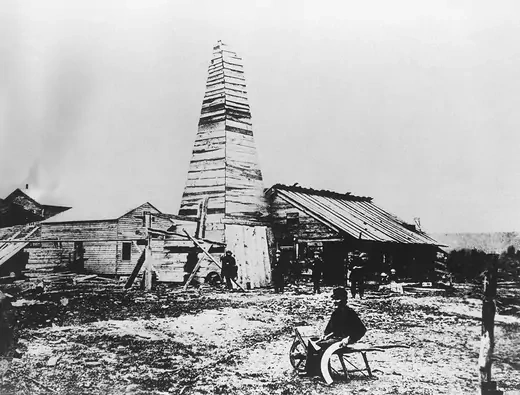
The development of the Watt steam engine in the late eighteenth century spurs a wave of mechanization in Europe and the United States known as the Industrial Revolution. Coal is the main energy source driving the revolution in its beginning years. In the mid-1800s, kerosene produced from refined crude oil begins to make its way onto the market in the United States as a lighting fuel, an alternative to the dwindling supply of whale oil. Crude oil is successfully extracted using a new drilling method in Pennsylvania, which sparks a regional influx of speculative oil drilling. The first U.S. oil refinery comes online in 1861, and the United States exports its first shipment of refined oil to London. Over the next century and a half, oil supplants coal as the country’s preeminent fuel source and contributes to its emergence as a major economic power.
Competition for Oil
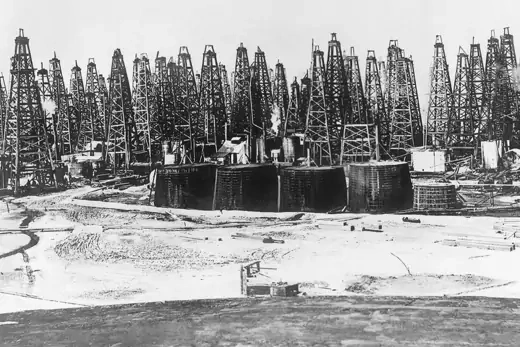
In 1880, the United States is responsible for 85 percent of the world’s crude oil production and refining, and kerosene is the fourth largest U.S. export. However, U.S. dominance of European and Asian oil markets is challenged by new oil finds controlled by Great Britain, the Netherlands, and Russia. Still, over the next two decades, major oil finds in states such as California, Oklahoma, and Texas help increase U.S. production from about twenty-six million barrels of oil annually to around sixty-four million barrels per year. By 1900, more than two hundred oil byproducts—including fuel for stoves and internal combustion engines, as well as lubricants for industrial machinery—begin to enter daily life. The 1901 Spindletop gusher—the largest to date—fuels a major oil rush in Texas, and U.S. oil production nearly triples in a decade.
The Model T
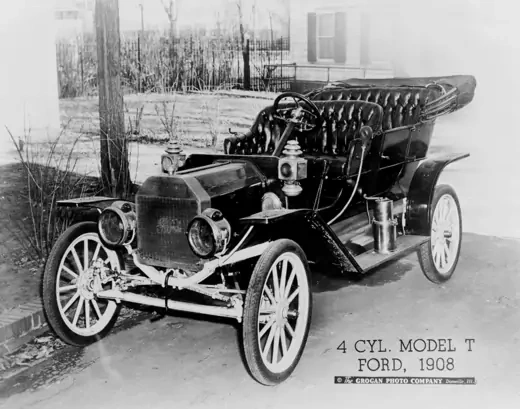
Henry Ford’s invention of the Model T in 1908—the world’s first inexpensive, mass-produced car—helps pave the way for a significant increase in auto ownership. By 1910, U.S. consumption of petrol (gasoline) surpasses kerosene. By 1927, the United States is the most motorized country in the world, with one motor vehicle for roughly every five people. Comparatively, other major industrial countries like Britain, France, and Germany have about one motor vehicle for every forty-four people. The United States continues to lead auto ownership per capita for the next century, and refined-motor fuel becomes the country’s predominant use of oil.
Birth of U.S. Oil Majors

By the 1880s, John D. Rockefeller’s Standard Oil owns 90 percent of the U.S. oil refineries and pipelines and the world’s largest oil tanker fleet. In 1906, the U.S. government takes the company to court for violating the Sherman Antitrust Act of 1890. The U.S. Supreme Court rules in favor of the government in May 1911. In July, Standard Oil is broken into separate entities, including those that later become Chevron, Amoco, Mobil, Conoco, and Exxon. These companies come to dominate much of the international oil market for the next six decades.
World War I
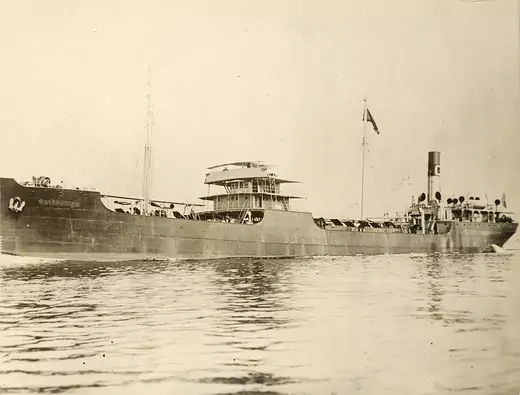
With the onset of World War I, oil becomes vital for modern warfare, fueling ships, land vehicles, and planes. German attacks disrupt U.S. oil exports to Britain and France, causing oil shortages in those countries. When the United States enters the war allied against Germany in 1917, the Wilson administration steps up efforts to supply oil to Britain and France. U.S. production cannot meet both domestic and war demand, so the United States begins importing oil from Mexico to close the gap. During the U.S. war effort, Mexican imports average between 2.5 million barrels and 4 million barrels of oil per month, supplementing U.S. production of about 30 million barrels a month.
Addressing Oil Insecurity
In 1919, the U.S. Geological Survey estimates U.S. oil supplies will run out in ten years, triggering the country’s first oil security fears. Though the United States produces roughly one million barrels of oil per day, or 65 percent of global oil supplies, more than 90 percent is consumed domestically. By 1920, crude prices increase to $3 a barrel, more than double the price in 1914. Congress passes the Mineral Leasing Act of 1920 [PDF], which requires leasing of federal lands for energy prospecting for the first time. In response to British and French attempts to shut U.S. oil companies out of their Middle East protectorates, the law includes a provision denying access to U.S. mineral rights by any foreign entities whose governments deny similar access to U.S. companies. U.S. oil companies also begin pursuing concessions in Latin America.
The Red Line Agreement
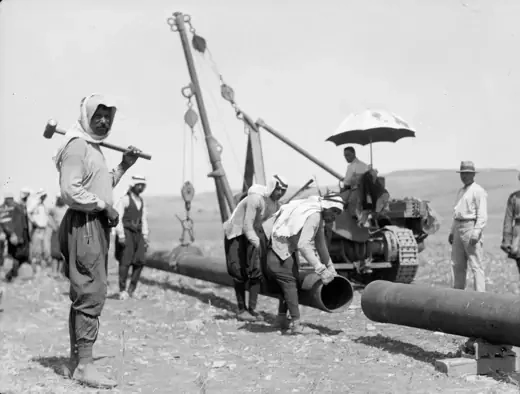
Following British and French attempts to shut U.S. oil companies out of regions they control in the Middle East, the U.S. government begins active oil diplomacy, insisting on an “open door” policy that would allow all companies to compete for foreign concessions regardless of national origins. But the doctrine fails to take hold. Instead, a consortium of seven oil companies is given financial interest in the Iraq Petroleum Company, and the companies agree to not independently develop oil in an area that spans from Turkey to Iraq and Saudi Arabia, but excludes Egypt, Iran, and Kuwait. This 1928 Red Line Agreement with its “self-denial clause” allows seven companies, five of which are American, to control the bulk of Mideast oil production by the early 1930s.
Oil Quotas

Technological breakthroughs and increasing oil production in Latin America, the Middle East, and the United States lead to overproduction. Disproving shortage projections by the U.S. Geological Survey, in less than a decade U.S. oil production more than doubles from what it was in 1920. Britain’s attempt to stabilize European oil prices through the 1928 Achnacarry Agreement, which limits sales by oil producers, is met with mixed success. In 1931, oil prices plummet to just a few cents a barrel. In 1933, the U.S. government imposes a production quota system for states and a duty tax on imported oil to keep cheap oil from flooding the market. Though the Supreme Court overturns the federal quota system in 1935, U.S. oil-producing states voluntarily continue it and prices begin to recover.
Nationalization
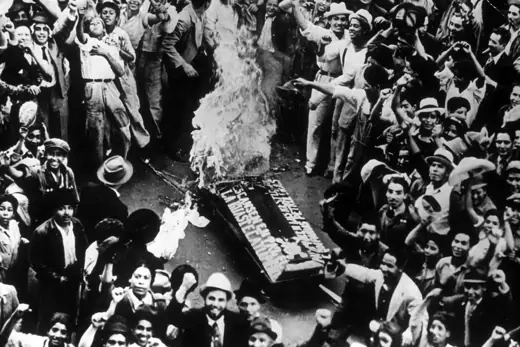
Governments begin to take a more active role in the oil industry. Iranian leader Reza Shah Pahlavi in 1932 cancels the concession of the British oil company Anglo-Persia but then later retreats after striking a deal for a fixed royalty and an increase in Persian laborers employed by the company. Meanwhile, European governments impose import quotas, set prices, and require fuel blending with ethanol made from excess crops, as well as requiring investment in domestic oil infrastructure. In 1938, the Mexican government nationalizes the oil industry and revokes U.S. oil concessions. The U.S. government does not retaliate, in part due to fears Mexico will align with Germany in World War II. Mexico’s actions foreshadow a wave of oil nationalizations that will follow in the decades after the war.
Oil Embargo on Japan
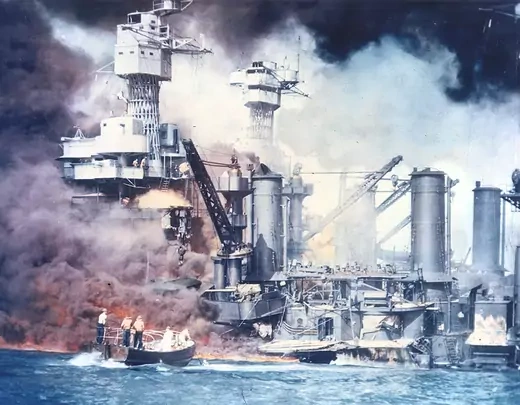
At the start of World War II, the United States is responsible for 60 percent of world production, followed by Russia and Venezuela. Japan, heavily reliant on U.S. oil imports, begins stockpiling oil and equipment shortly before it invades Indochina. In response, the U.S. government imposes controls on oil exports to Japan, effectively cutting off oil supplies in the summer of 1941. On December 7, Japan attacks Pearl Harbor but fails to target the Navy’s on-island oil storage—about four million barrels—leaving it to fuel the surviving Pacific fleet.
Gas Rationing

By 1941, oil shipments from the United States to allies in Europe are impeded by German U-boat attacks. When the United States enters the war, it embarks on a nationwide rationing plan that includes gas coupons and limiting driving speed to thirty-five miles an hour. Efforts also are made to bolster U.S. oil production and transport. Meanwhile, Venezuela enacts a new “fifty-fifty” oil law, which gives the country half of all oil profits but leaves U.S. concessions in place.
Budding U.S.-Saudi Relations
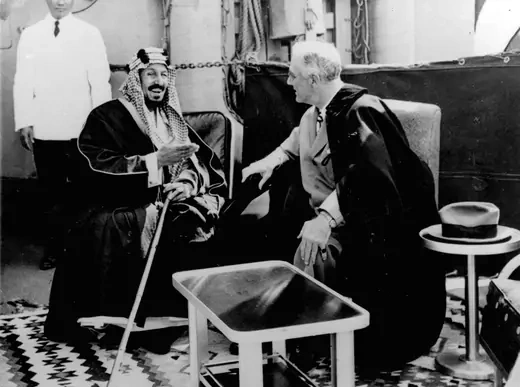
In 1938, Saudi Arabia is found to have vast quantities of oil. In 1943, with concerns growing about the diminishing U.S. oil production capacity, President Franklin Roosevelt declares Saudi oil vital to U.S. security and provides financial support. In February 1945, Roosevelt and Saudi King Abdul Aziz meet aboard a U.S. ship on the Suez Canal to discuss closer ties. A few years later, the world’s biggest oil field is found in Saudi Arabia, and the country quickly becomes the world’s largest exporter of oil—though it does not become a significant U.S. supplier for several decades.
End of the War

At the end of World War II, the United States is an economic and military superpower. The country plays a central role in the global recovery, including providing energy aid to a devastated Europe. The war’s end also brings about the end of U.S. gas rationing. The U.S. auto industry booms, with the number of cars in the United States jumping from twenty-six million to forty million in the five years after the war. In the decades that follow, the transportation sector’s (mainly automobiles) share of oil consumption rises from about 50 percent to more than 70 percent.
The Marshall Plan

The European Recovery Program, also known as the Marshall Plan, helps war-torn Europe get access to petroleum imports. Over the course of the forty-five-month program, the United States supplies more than $11 billion in oil aid, about 10 percent of the total aid provided by the program. The continent begins to become more dependent on oil for its energy needs as Europeans turn away from coal. But European oil needs begin to be increasingly met by the Middle East and not the United States. The United States is a net oil exporter in 1945, but by 1950 it is importing nearly one million barrels a day and within two decades the country is importing over six million barrels per day—more than a third of U.S. demand.
U.S.-Iran Oil Consortium
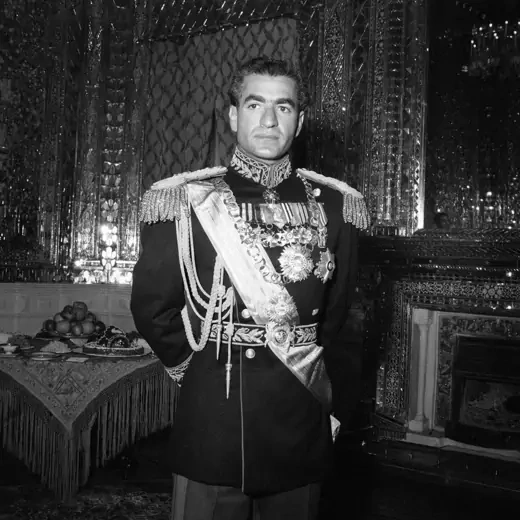
In August 1953, the Iranian military, with the help of British and U.S. intelligence agencies, overthrows Iranian Prime Minister Mohammad Mossadeq—who nationalized the country’s oil industry two years earlier. The U.S. government works with U.S. oil majors and the Iranian government—now run by the Shah—to bring Iranian oil back online following a British embargo of oil shipments. Iran’s oil remains nationalized, but in October 1954 the government agrees to a consortium of mainly U.S. companies to manage Iran’s oil industry. To prevent running afoul of U.S. antitrust laws, U.S. oil majors relinquish a small portion of their share in the consortium to allow independent U.S. producers to buy in.
Suez Canal Crisis
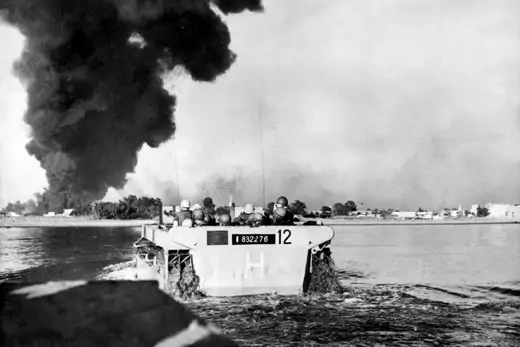
In July 1956, Egypt nationalizes the Suez Canal, which has been controlled by Britain and France. The two countries, in a coordinated attack with Israel, temporarily seize the canal in October. Half the canal’s traffic is petroleum, and the ensuing crisis from its closure threatens Middle East oil shipments, which supply about eight hundred thousand barrels a day to Europe. The intervention stokes Cold War tensions, and U.S. President Dwight D. Eisenhower compels a withdrawal to avoid a showdown with the Soviet Union. In a 1957 speech to Congress, Eisenhower says the Middle East would be a prize for international communism and asks Congress to provide economic and military support for any nation or groups of nations in the region with “governments manifestly dedicated to the preservation of independence and resistance to subversion.”
Cap on U.S. Oil Imports
In 1959, the world once again faces an oversupply of oil and prices are slashed. U.S. President Dwight Eisenhower imposes the Mandatory Oil Import Program, a quota system on oil imports, so that they cannot exceed more than 9 percent of domestic consumption. The program also gives preferential treatment to Canada and Mexico. The quota lasts for fourteen years. U.S. oil prices remain stable, and eight years later are 60 percent to 70 percent above Mideast crude prices.
Creation of OPEC
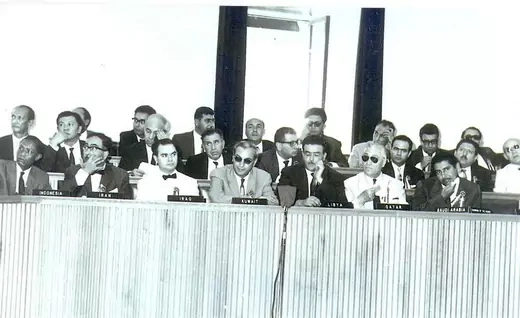
Arab nations, relying heavily on oil revenue, are increasingly frustrated by oil price cuts by largely Western oil companies—and by U.S. import caps, which also depress prices. In August 1960, Western oil majors once again slash prices without consulting exporting countries. In September, representatives from Iran, Kuwait, Qatar, Saudi Arabia, and Venezuela meet in Baghdad with Iraqi officials—together they represent 80 percent of the world’s crude exports. On September 14, the Organization of the Petroleum Exporting Nations (OPEC) is formed with the purpose of defending oil prices. However, in its initial years, OPEC exerts little influence and is virtually ignored by the U.S. government.
First Arab Oil Embargo
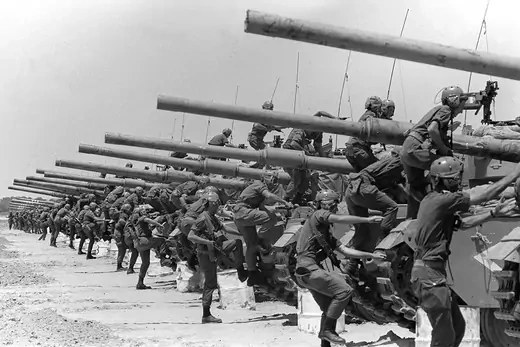
On June 6, 1967, Israel enters into an armed conflict with Egypt, Jordan, and Syria, known as the Six Day War. The next day, Arab oil ministers call for an embargo on countries friendly to Israel. Oil shipments halt to the United States and Britain. U.S. domestic production, however, surges by one million barrels a day and largely offsets the temporary loss of Mideast oil globally. By September, the embargo is lifted, and, for a short time, the world experiences another oil glut.
Tehran and Tripoli Agreements
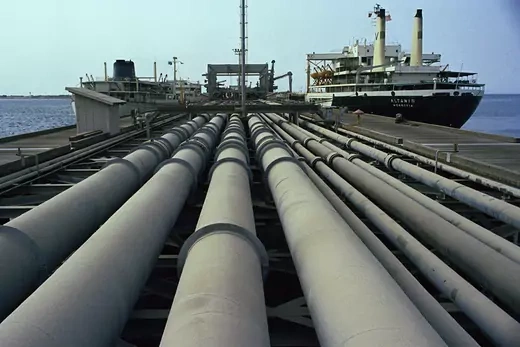
In April 1971, OPEC moves to rebalance profit sharing and oil prices and refuses to allow foreign oil companies to deal with the organization as a whole. The bloc instead forces them into separate negotiations, one for Persian Gulf producers (Tehran Agreement) and one for producers on the Mediterranean (Tripoli Agreement), resulting in higher prices. The incident marks a turning point for OPEC’s clout. Within a decade, many of OPEC’s members begin to partially or fully nationalize their oil resources and have greater influence in setting oil prices. By the end of the 1970s, international oil companies have unfettered access to just 7 percent of the world’s oil reserves, down from 85 percent in the 1960s. U.S. oil production, meanwhile, peaks in 1970 and declines about 45 percent within three decades.
End of U.S. Import Quota
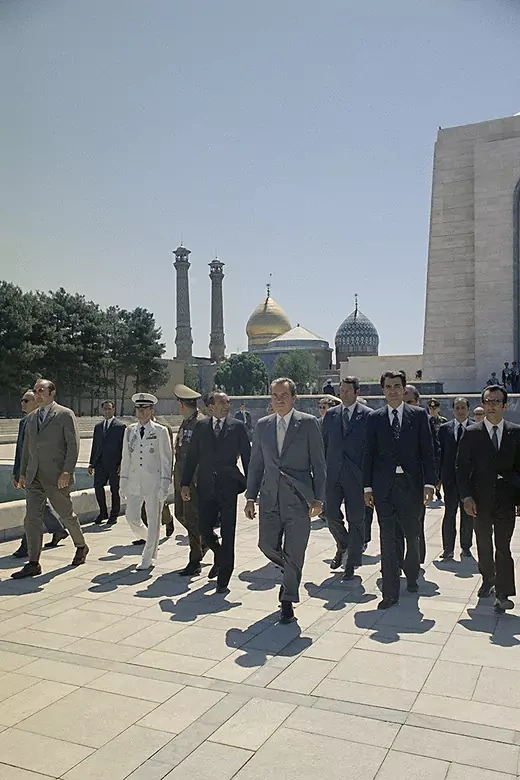
U.S. spare production capacity is evaporating. Faced with a looming gasoline shortage, in April 1973 President Richard Nixon announces he is ending the Mandatory Import Program—which sets limits on oil imports—but rejects recommendations to implement conservation efforts and develop fuel alternatives. The import mandate comes two years after Nixon imposes oil price controls as part of his anti-inflation strategy. Oil imports, representing about 30 percent of U.S. consumption in 1973, increase to nearly 50 percent of consumption [PDF] within four years.
Oil Crisis

Syria and Egypt attack Israel on October 6, 1973, on the Jewish holy day of Yom Kippur. On October 19, with the war still underway, the Nixon administration announces a $2.2 billion military aid package to Israel. Arab states respond by suspending oil shipments to nations supportive of Israel. The embargo reduces traded oil supplies by 14 percent internationally. Gasoline prices in the United States increase as much as 40 percent within a few months. Consumers in Europe, Japan, and the United States begin to panic over oil shortages. Hours-long lines at gas stations form across the United States as people start to hoard gas supplies following gas rationing and price controls. President Nixon on November 7 announces a swath of new energy policies and “Project Independence,” a goal of U.S. energy independence by 1980.
End of the Second Arab Oil Embargo
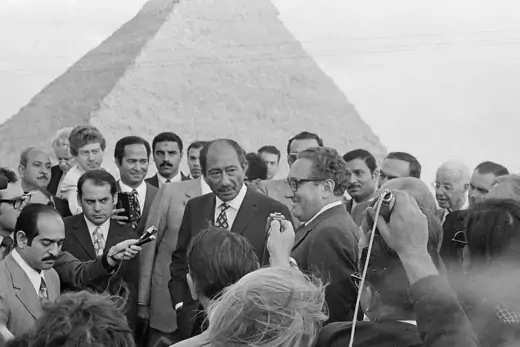
With the 1973 oil embargo after the Yom Kippur War wreaking economic havoc, U.S. Secretary of State Henry Kissinger starts “shuttle diplomacy,” helping attain disengagement between Israel and Egypt in January 1974. Arab oil ministers agree to end the embargo on March 18, 1974, on the condition that the United States also promotes Israeli-Syrian disengagement. Kissinger helps achieve an agreement between the two states in May, which includes a cease-fire and withdrawal of Israeli forces from some captured territories. The world’s top economies form the International Energy Agency to coordinate “in times of oil supply emergencies.” They also come together at a summit in France in 1975 to discuss the global economy and energy dependency. This heads-of-state forum is called the Group of Six and later becomes the G8 and then the G7.
U.S. Energy Conservation Spurred

The 1973 oil crisis spurs the U.S. Congress to mandate a fifty-five miles per hour speed limit on highways and to pass the Energy Policy and Conservation Act of 1975, which establishes the Strategic Petroleum Reserve and fuel efficiency standards for new automobiles. Nixon-era price controls remain on domestic oil, depressing production. Between 1974 and 1978, U.S. consumption of imports nearly doubles, and U.S. oil demand rises by about 2.1 million barrels per day. In 1977, the Carter administration organizes energy agencies into the Department of Energy. President Carter also puts out his first set of energy proposals focusing mainly on conservation, and signs legislation in 1978 to encourage fuel switching and efficiency by electric utilities and other U.S. industries.
Iranian Revolution
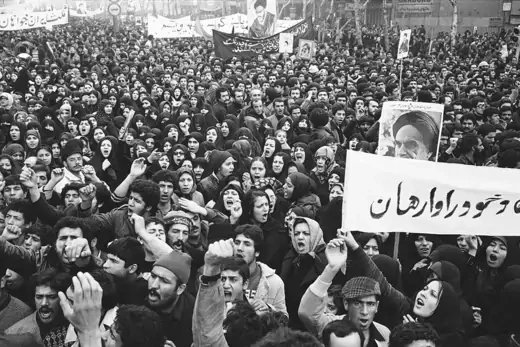
In October 1978, thousands of oil workers go on strike in Iran, as part of a cycle of unrest protesting leader Mohammed Reza Shah. Oil output in Iran drops from more than five million barrels a day to zero by December—amounting to about a 5 percent loss in global production. The Shah is forced to leave the country in January 1979. Exiled senior Shiite cleric Ayatollah Ruhollah Khomeini returns to assume control of Iran under an Islamic government. A group of Iranian students takes over the U.S. embassy in Tehran on November 4, 1979, taking sixty-three American hostages for more than four hundred days. President Carter responds by severing diplomatic relations and embargoing Iranian oil imports. Between January 1979 and December 1979, global oil prices more than double.
Crisis of Confidence
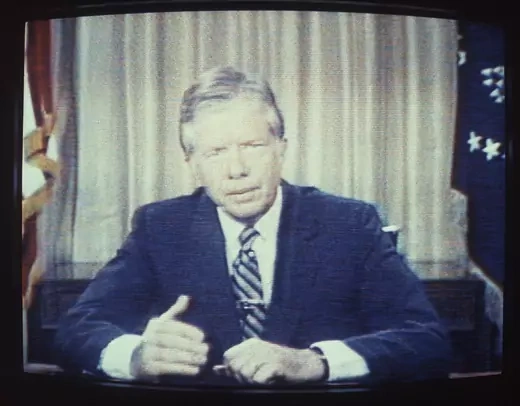
Iran’s revolution sparks panic over another oil-supply shortage, and oil prices double. Long gas lines return to the United States. In July, President Jimmy Carter gives his fifth major speech on energy policy, which includes announcing more energy conservation measures and a phase-out of oil price controls. A frustrated Carter admonishes the nation for worshiping “self-indulgence and consumption” and having “a crisis of confidence.” In 1980, Carter signs the Energy Security Act [PDF], which includes incentives for geothermal, solar, and biomass energy to give electricity generators new alternatives to oil. It also establishes the U.S. Synthetic Fuels Corporation, intended to produce two million barrels a day in liquid fuel from non-petroleum sources like coal within five years.
Iran-Iraq War

Iran and Iraq go to war in September 1980. Though the United States is officially neutral, it renews diplomatic ties with Iraq, which have been severed since the 1967 Arab-Israeli conflict. Continuing attacks on both Iraqi and Iranian oil facilities remove four million barrels a day in oil production from the global market. The Reagan administration issues a national security directive in 1983 [PDF] to increase the U.S. military presence in the Persian Gulf to help protect the oil facilities and shipments to allies. The war lasts eight years.
Focus on Offshore Drilling
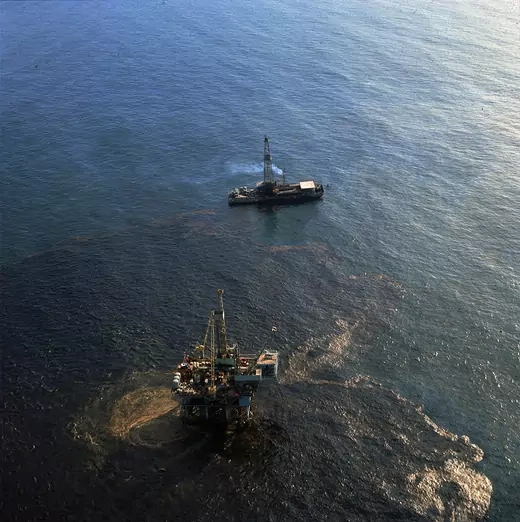
The U.S. Congress imposes a moratorium on new offshore drilling off the California coast in 1981 in response to public outcry and lingering environmental concerns caused by an oil spill off the coast of Santa Barbara in 1969. Within a few years, the ban is extended to all new leases in U.S. coastal waters, except for parts of the Gulf of Mexico and some waters off the coast of Alaska. This ban continues to the present day. However, existing offshore drilling, from leases before the moratorium and from allowed parts of the Gulf and Alaska, represents about 8 percent of all U.S. production in 1981. Between increasing production in allowed offshore areas and a drop in overall U.S. production, offshore drilling rises to about 30 percent of U.S. production in the next three decades.
U.S. Diversifies Energy Consumption
The Reagan administration fully deregulates crude prices in 1981, allowing U.S. producers to raise prices to market levels. Non-OPEC production begins to outstrip that of OPEC—which hinders the cartel’s influence on oil prices. Global demand begins to drop due to high prices and conservation measures, and another oil surplus ensues. By 1982, the United States imports about 28 percent of its oil, down from more than 45 percent in 1977. By 1985, U.S. fuel economy averages for automobiles reach nearly 28 mpg, up from 20 mpg in 1978, and consumer fuel switching for heating and electricity helps lower oil consumption. Oil prices drop from a yearly average of $35 per barrel in 1981 to less than $15 in 1986. The collapse in price encourages oil companies to shift to cheaper foreign exploration, and U.S. imports begin to steadily rise again.
Exxon Valdez Oil Spill

The super tanker Exxon Valdez strikes a reef in Prince William Sound, Alaska, spilling eleven million barrels of oil and damaging coastline and fisheries. Considered one of the worst environmental disasters in U.S. history, the spill—and its $2 billion cleanup cost—bolsters the environmental movement and leads to policies that further restrict offshore drilling. In 1990, Congress passes the Oil Pollution Act [PDF] for offshore accidents, which creates a three-tiered emergency response plan for spills, caps liability for operators of offshore facilities, and establishes a trust fund that makes up to $1 billion available for each spill incident.
Iraq's Invasion of Kuwait
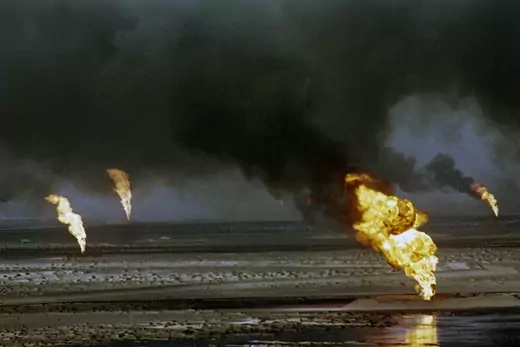
Iraq invades Kuwait on August 2, 1990, following a dispute over the Rumaila oil field on the border. In a speech on August 8, 1990, President George H.W. Bush says Iraq’s aggression poses an economic threat to the United States, which now imports half its oil. Bush also declares the “sovereign independence of Saudi Arabia [a] vital interest” and deploys troops to the country. Nations dependent on Persian Gulf imports, such as Japan, provide much of the funding for a U.S.-led, multinational military effort to liberate Kuwait in January 1991. The Bush administration releases thirty-four million barrels of oil from the U.S. Strategic Petroleum Reserve in anticipation of an oil shock, but contrary to predictions, oil prices drop from about $30 per barrel in September to less than $20 in January. Iraq surrenders in late February 1991.
A Nation of SUVs

In 1993, the Clinton administration announces a partnership to develop and produce affordable, fuel-efficient, low-emission vehicles. But inexpensive oil and a booming economy drive up consumption in the United States. While European and Japanese car companies move ahead with commercialization of the first hybrid passenger vehicle, sales of gas-guzzling sports utility vehicles (SUVs)—considered light trucks and thus exempted from tougher U.S. fuel economy standards—explode. SUVs make up a large part of the fleet of U.S. automakers, garnering significant profits in comparison to smaller, more fuel-efficient cars. Between 1993 and the country’s record demand for oil in 2005, consumption increases by 3.6 million barrels a day to 20.8 million barrels per day.
Kyoto Protocol
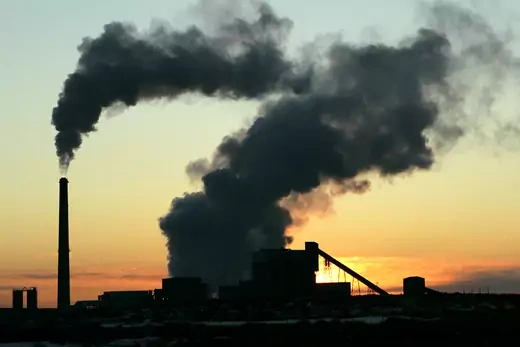
In 1997, most of the world’s leaders sign the Kyoto Protocol, an international mechanism for countries to reduce and adapt to rising greenhouse gas levels in order to mitigate climate change. But the United States, the largest greenhouse emitter of the time, refuses to ratify the treaty and for the next decade faces international criticism for its slow adoption of emissions-reduction policies. And though a third of manmade emissions come from petroleum, U.S. policy on oil consumption remains focused on energy security and air quality. Environmental advocates target the U.S. oil and auto industries for lobbying against climate policy in the country for the next decade.
Birth of the Super Majors
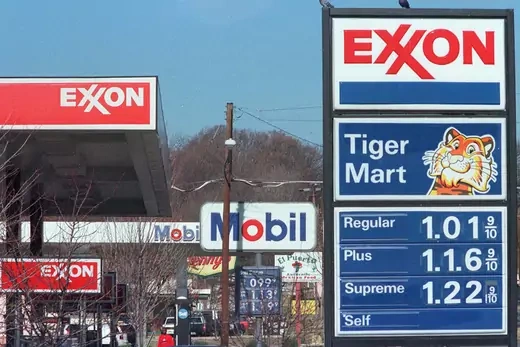
Asia’s economic crisis in 1997 causes a drop in demand in what has been a growth region for oil markets. Though OPEC tightens its oil production quota, global prices plunge to below $10 per barrel at the end of 1998, down from nearly $20 per barrel in late 1997. The downturn, plus an increasingly constrained environment for oil concessions globally, encourages a string of oil mergers among the world’s largest private oil companies, including ones between BP and Amoco (the largest foreign takeover of a U.S. company to date), Exxon and Mobil, and Texaco and Chevron. Accused of stifling competition, these mergers face political scrutiny [PDF] in the next decade as U.S. gas prices increase significantly.
New Assertive Oil Powers

In February 1999, Hugo Chavez assumes office as president of Venezuela, and embarks on a social revolution that includes financing new social programs with the country’s oil revenues. Venezuela continues to be one of the largest sources of U.S. oil imports, but Chavez is increasingly critical of U.S. foreign policy over the course of the next decade and threatens repeatedly to cut off oil shipments. In 1999, Vladimir Putin takes office as president of Russia, which has the largest conventional oil reserves outside of OPEC. Both Venezuela and Russia nationalize much of their oil resources and restrict access by international oil companies.
Canada Overtakes Saudi Arabia
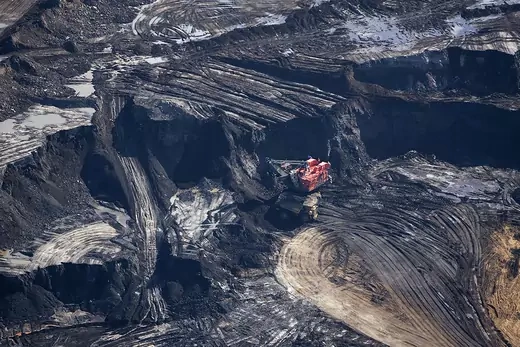
In 2004, Canada surpasses Saudi Arabia as the largest single exporter of oil to the United States, providing 1.6 million barrels per day compared to the Saudi’s 1.5 million barrels. A decade before, Canada begins investing heavily to develop its oil sands, which requires more money and effort to extract and refine than conventional oil. Many estimate oil sands place the country’s oil reserves second to Saudi Arabia. In 1999, oil sands represent about 15 percent of total Canadian crude production, but by 2010 oil sand production is nearly half. Still, heavily polluting oil sand production increasingly becomes an environmental concern.
Renewable Fuel Support
In 2005, the U.S. Congress passes the Energy Policy Act, which includes new incentives for transportation fuel alternatives and flex-fuel cars as well as new subsidies for domestic oil exploration. The law mandates that 7.5 billion gallons of renewable fuels be blended into gasoline by 2012. In his 2006 State of the Union address, U.S. President George W. Bush says “America is addicted to oil.” The law is criticized for adding billions in federal subsidies to the oil industry, and subsidies of corn-based biofuel are criticized as a threat to food security and the environment. Some energy experts criticize U.S. tariffs on Brazilian sugarcane ethanol, which is cheaper and more energy efficient to produce.
Skyrocketing Oil Prices
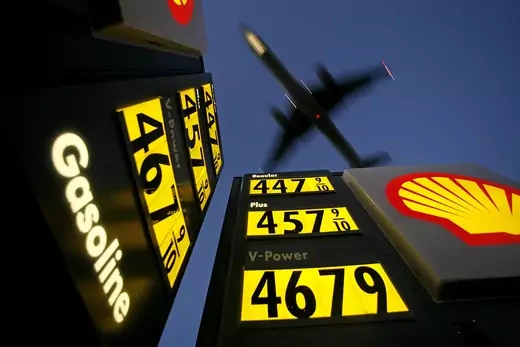
In 2006, a time of near record-high U.S. oil consumption and imports, oil prices begin to rise steadily, topping a record $147 a barrel in the summer of 2008. This translates to gasoline averages above $4 per gallon in much of country. Experts debate the cause of the record prices, blaming it on factors such as the economic rise of China and India, commodity market speculation, and basic issues of supply. Fuel prices and high food prices begin to cause unrest around the world. In the United States, high gas prices in a presidential election year invigorate debate about increasing domestic production, especially ending the moratorium on offshore drilling and in Alaska’s Arctic National Wildlife Reserve. “Drill baby drill” becomes a rallying cry for the Republican Party. Shortly after the global financial crisis begins in 2008, oil prices plummet.
Energy Independence and Security Act
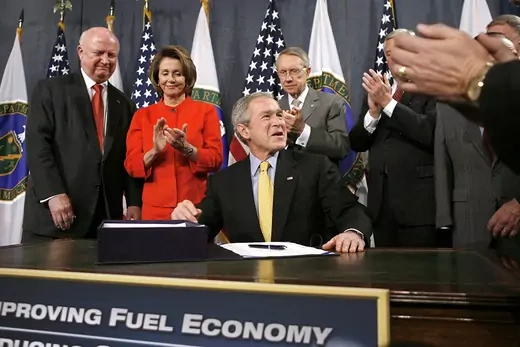
In 2007, Congress passes the Energy Independence and Security Act, which will increase Corporate Average Fuel Economy (CAFE) standards from 27.5 mpg to 35 mpg by 2020, and ends the light truck exclusion. The law also mandates greater production of non-corn-based ethanol, and requires biofuels blended with gasoline and diesel to be at least 20 percent less in greenhouse gas lifecycle emissions than the petroleum-based fuels. In May 2009, the Obama administration announces accelerated CAFE standards of 39 mpg for cars and 30 mpg for light trucks, which the administration highlighted as part of its climate change policy goals.
BP Oil Spill
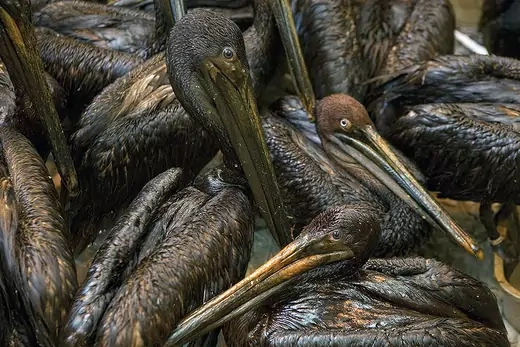
In the spring of 2010, U.S. President Barack Obama lays out his plans for U.S. energy policy, including supporting more biofuels and opening more U.S. waters to offshore oil drilling. But in April, a deepwater drilling rig explodes and sinks in the Gulf of Mexico, causing a massive, four-month oil spill. The Obama administration, in response, places a temporary ban on all new offshore drilling projects in order to review U.S. safety and environmental enforcement. Calls renew for strengthened measures to reduce U.S. oil consumption, now at less than nineteen million barrels per day, down nearly two million barrels from 2005 record levels.
Libya Rocks Oil Markets

In February 2011, Libya becomes the first major oil-producing nation to join a spate of popular uprisings in the region, which topples regimes in Egypt and Tunisia. With the largest reserves in Africa, Libya represents about 2 percent of global oil production. Global oil prices spike nearly 10 percent in one day. Though the country does not supply oil to the United States, concerns grow that the situation in Libya and potential unrest in other oil-producing nations could lead to a new global oil crisis. In a March 30 speech, U.S. President Barack Obama says: “We will keep on being a victim to shifts in the oil market until we get serious about a long-term policy for secure, affordable energy.” He pledges to reduce U.S. oil dependence by one-third within a decade.
U.S. Releases Oil from Strategic Reserve
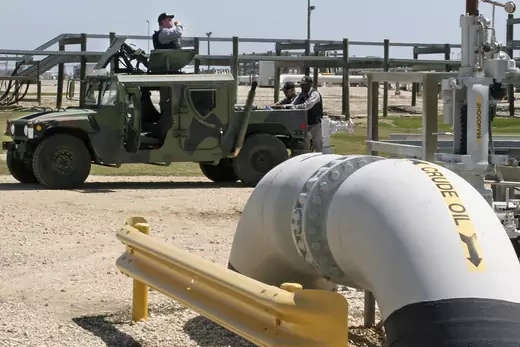
The Obama administration announces it will release thirty million barrels from the U.S. Strategic Petroleum Reserve over thirty days. The administration says the move is to offset the loss of Libya’s 1.5 million bpd in output since civil war erupted in February. The U.S. release coincides with the release of another thirty million barrels from the reserves of other members of the International Energy Agency. The IEA says “greater tightness in the oil market threatens to undermine the fragile global economic recovery.” The coordinated release comes after OPEC ministers fail to agree to greater output. The U.S. reserve sale represents the fourth major drawdown since the reserve’s initiation in 1977. The administration’s decision draws criticism from some analysts and political opponents for its timing, rationale, political overtones, and uncertain impact on oil markets.
U.S. Oil Imports Hit Two-Decade Low
Imports of crude oil and petroleum products fall to less than 260,000 barrels per day, the lowest in almost two decades, according to the U.S. Energy Information Administration. The reduced reliance on foreign oil is the result of both declining demand and a domestic energy revolution which, through the combination of hydraulic fracturing and horizontal drilling, unlocked vast reserves of “tight oil” in shale rock formations. Tight oil production surges from less than one million barrels a day in 2010 to over four million barrels a day by December 2015, exceeding the individual production of every OPEC member except Saudi Arabia.
OPEC Meets as Global Oil Prices Tumble

U.S. tight oil producers contribute to a global supply glut that puts downward pressure on prices. By November, crude oil falls below $75 a barrel, down from $110 in June. OPEC members meet in Vienna, where, despite opposition from some members who want to cut OPEC oil production to halt the price slide, Saudi Arabia pushes the group to maintain a production target of thirty million barrels per day. The organization meets and regularly exceeds that target, leading to further price declines below $50 a barrel by early 2015, which squeezes the finances of oil-exporting countries and forces unconventional drillers in the United States to curb costs and sharply cut production.
Obama Administration Rejects Keystone XL Pipeline
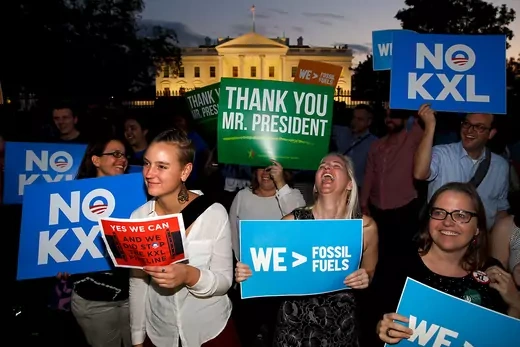
President Barack Obama rejects the proposed Keystone XL pipeline, which would have transported more than eight hundred thousand barrels of oil per day from Canada to Texas. Subject to multiple rounds of State Department review since its conception in 2008, supporters said it would have created jobs and enhanced energy security, while opponents worried about potential damage to the environment from spills and increased carbon emissions. Debate over the merits of the cross-border pipeline will continue, as TransCanada, the company behind the project, files a lawsuit against the U.S. government charging discriminatory treatment under the North American Free Trade Agreement (NAFTA).
Congress Lifts Oil-Export Ban
Congress votes to lift four-decade-old restrictions on U.S. crude oil exports, and a shipment immediately leaves the port of Corpus Christi, Texas, for sale in Europe. The shipment consists of light sweet crude oil drawn from south Texas’s Eagle Ford shale deposits. Even as the United States continues to import oil, opportunities for exports will arise since many of the country’s existing refineries are not optimized to process the type of light crude drawn from shale. However, most analysts believe that the impact on production, prices, and geopolitics of lifting the restrictions will be modest.
Paris Agreement

The Paris Agreement—signed by more than 190 countries, including the United States—enters into force. The most ambitious climate accord to date, the agreement requires all parties to set targets to reduce greenhouse gas emissions, with the goal of arresting the rise in the average global temperature. Countries also agree to aim for net-zero carbon emissions by mid-century. The United States pledges to cut its emissions by more than 25 percent from 2005 levels by 2025, a move that requires transitioning away from fossil fuels, including oil. Although the accord does not include enforcement mechanisms, there are periodic performance reviews meant to encourage countries to adopt more ambitious targets.
Trump’s ‘America First’ Energy Plan

After campaigning on a promise to boost U.S. oil production and achieve energy independence, President Donald Trump begins rolling back his predecessor’s policies. In June, Trump announces the U.S. withdrawal from the Paris Agreement, which takes effect in November 2020. His administration later scraps Obama’s tougher fuel efficiency standards for cars and trucks, which the Environmental Protection Agency says will result in about two billion more barrels of oil consumed. The U.S. fracking boom continues, with the administration leasing four million acres of federal land to fossil fuel companies. Trump also revives the Keystone XL pipeline and, with support from the Republican-controlled Congress, opens the Arctic National Wildlife Refuge (ANWR) in Alaska for oil drilling despite opposition from Democrats, environmental activists, and some Alaska Native groups. Alaskan lawmakers and other Alaska Native groups support the move due to the expected revenue and job growth.
COVID-19 Pandemic

The world is rocked by the emergence of a new coronavirus disease, COVID-19, that quickly becomes a global pandemic. Response measures, including stay-at-home orders, trigger a sharp drop in the demand for oil. Falling oil prices create a rift within OPEC and lead to a price war between Saudi Arabia and Russia, with Riyadh ramping up production to further slash prices in an effort to force Moscow to the table. Oil prices hit rock bottom; in April, a major benchmark price for U.S. crude oil briefly falls below zero for the first time in history. After Whiting Petroleum Corporation, a major U.S. producer, declares bankruptcy, President Trump attempts to broker an OPEC deal to prevent further damage to the U.S. industry. After Trump intervenes, OPEC and Russia agree to curb production and raise prices.
Biden’s New Direction
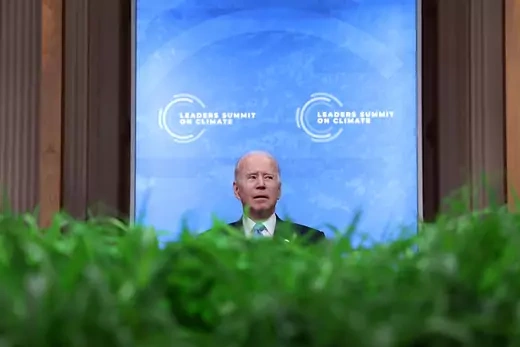
President Joe Biden is sworn into office and promises to take aggressive action on climate change. He rejoins the Paris Agreement and pledges to cut U.S. emissions by at least 50 percent of 2005 levels by 2030—and achieve net-zero emissions by 2050. To reach that goal, Biden calls for a return to higher fuel efficiency standards for cars and trucks, as well as measures to spur the use of electric vehicles, among other proposals. Biden cancels the Keystone XL pipeline and suspends drilling leases in the ANWR. However, approval for drilling on other federal lands continues at a record pace. As the pandemic abates in the United States, demand for oil rebounds and gas prices surge to a seven-year high.
Russia’s War With Ukraine
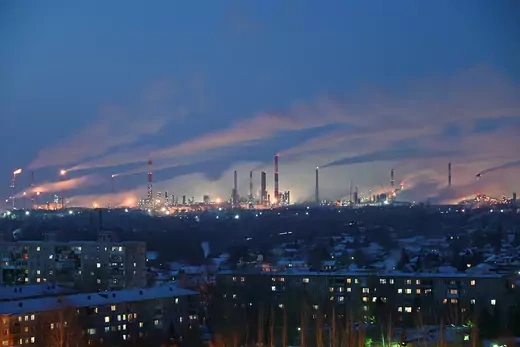
Russia’s invasion of Ukraine causes turmoil in global oil markets. Biden blocks U.S. imports of oil from Russia, and Western sanctions cause energy companies to withdraw from the country. Oil prices, already rising in the wake of the pandemic, surge to their highest level since 2008. In response to near-record gasoline prices, U.S. lawmakers on both sides of the aisle call for boosting domestic oil production, though some in Congress urge a quicker transition to renewable energy. The United States and other members of the International Energy Agency announce plans to collectively release sixty million barrels of oil from strategic reserves. Meanwhile, the Biden administration considers smoothing rocky relations with Iran, Saudi Arabia, and Venezuela in the hope that those countries will supply more oil. Senior U.S. officials travel to Caracas for the first time since 2019, and the Biden administration pushes to finalize negotiations on reviving the 2015 Iran nuclear agreement and lifting U.S. sanctions on Tehran.
U.S. Oil Production Reaches Record High As Climate Concerns Mount
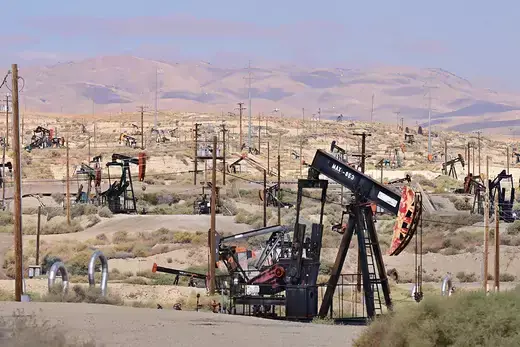
U.S. crude oil production surpasses thirteen million barrels a day for the first time, making the United States the world’s largest producer of the commodity. The surge in production keeps U.S. gasoline prices low despite several rounds of voluntary production cuts by the OPEC+ coalition, which includes Russia. However, the United States still imports more than it exports amid high domestic energy demand and a mismatch between refining capacity and the type of crude oil produced by U.S. shale fields. Meanwhile, some governments push for a global deal to phase out fossil fuels at the year-end COP28 summit, citing their contribution to climate change and the year’s record heat.
 Online Store
Online Store